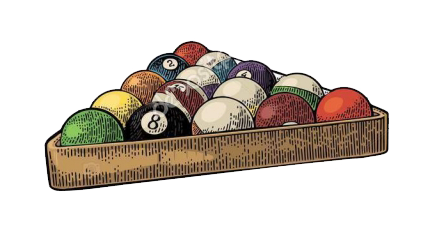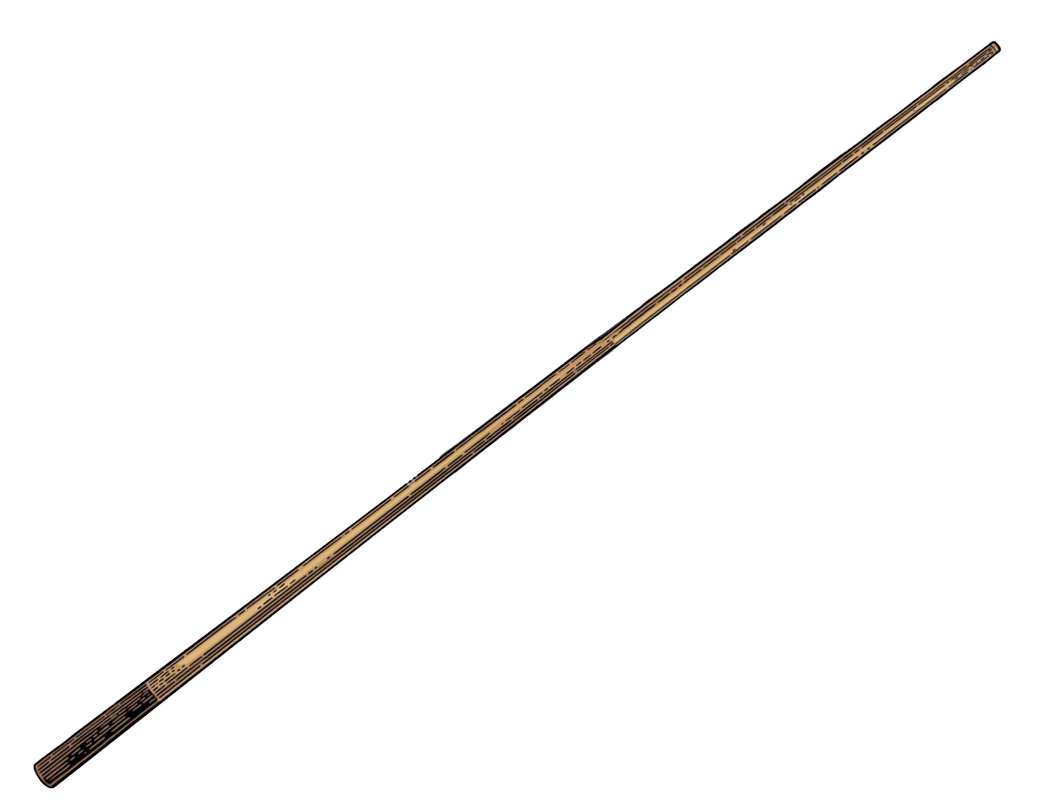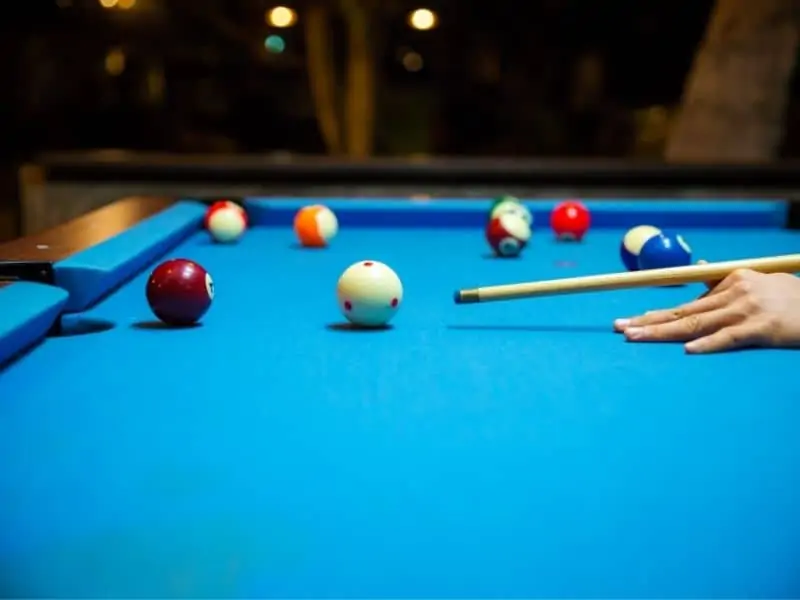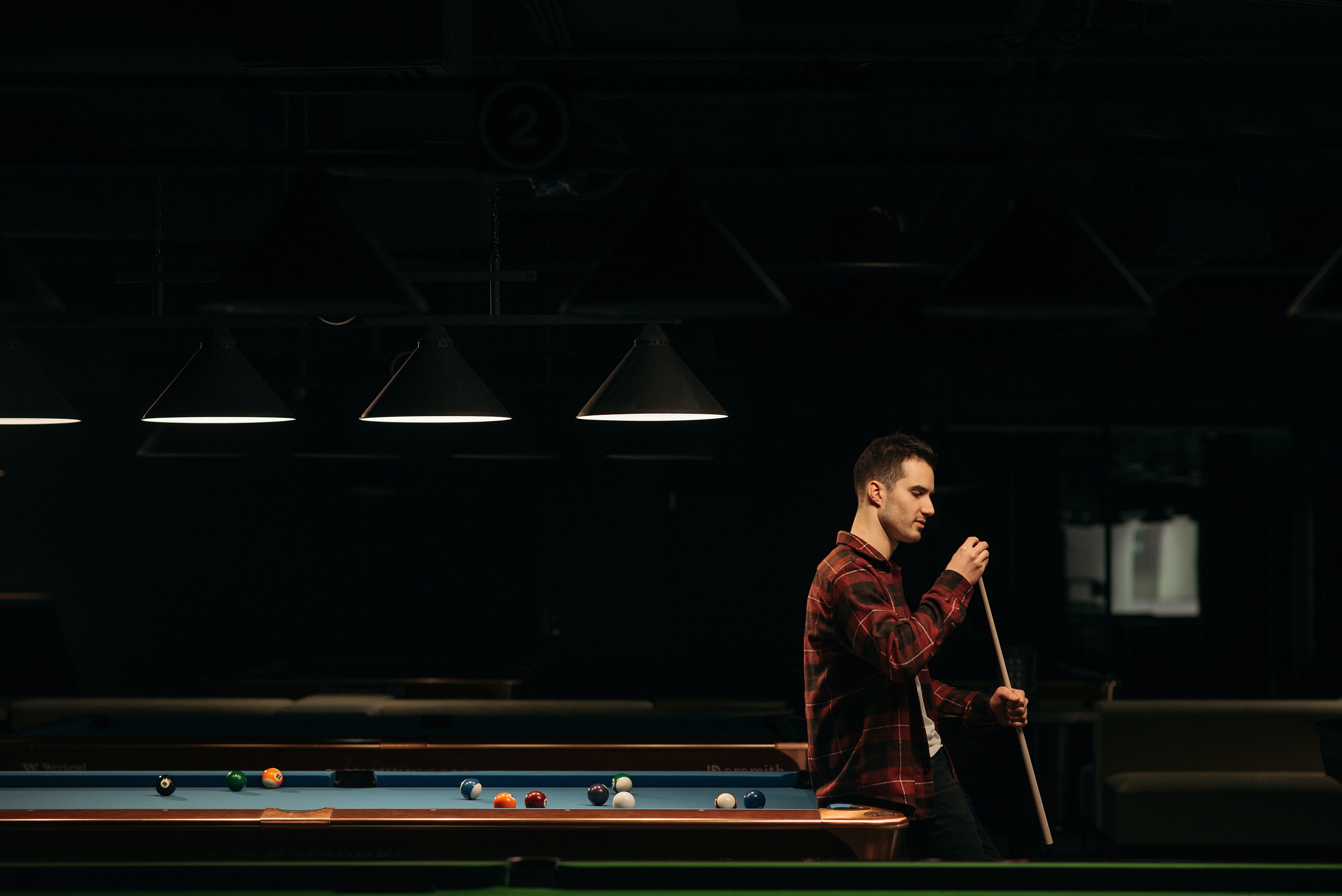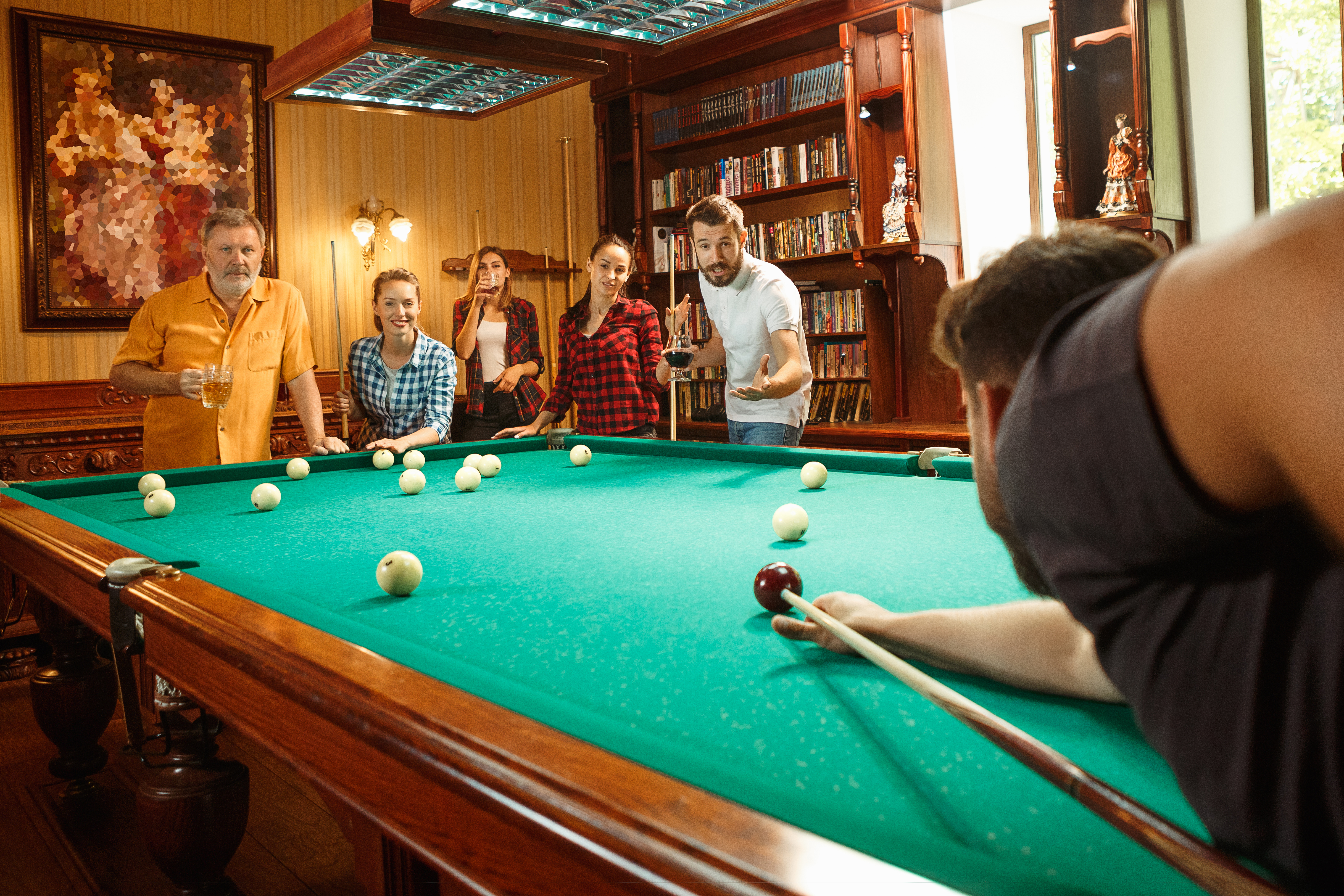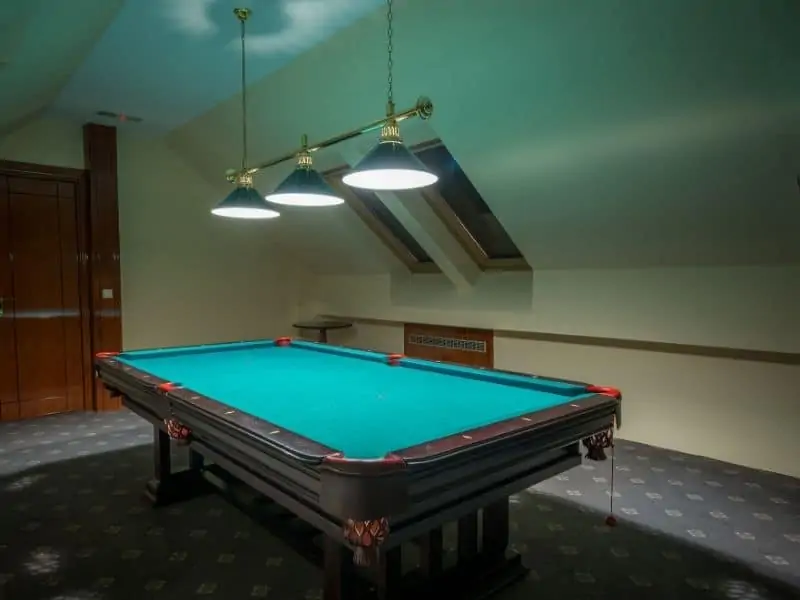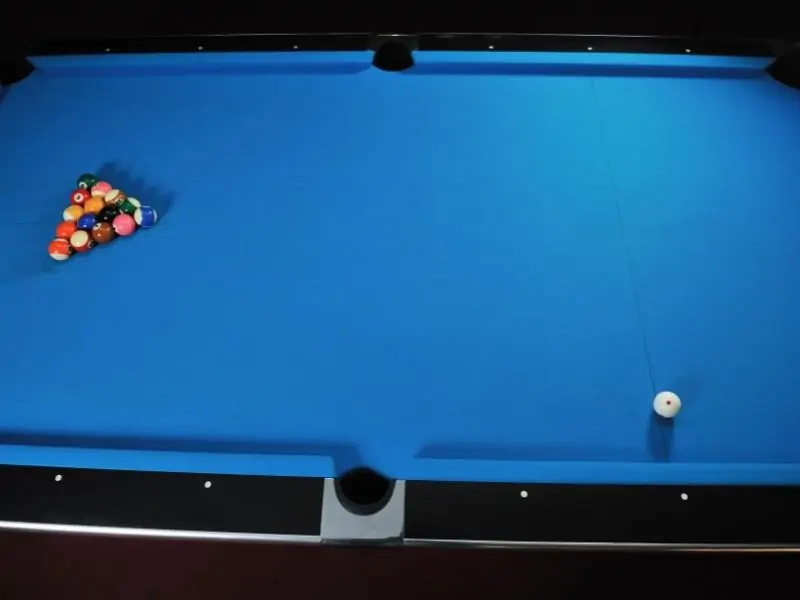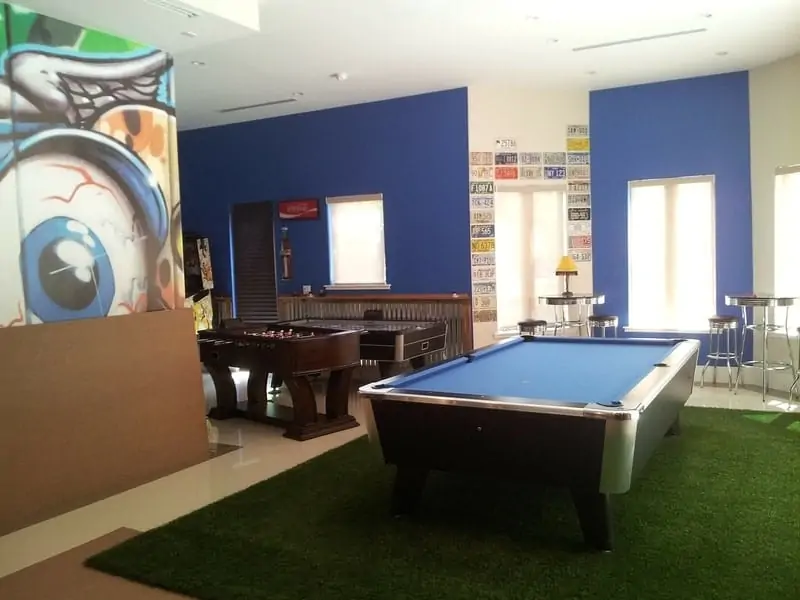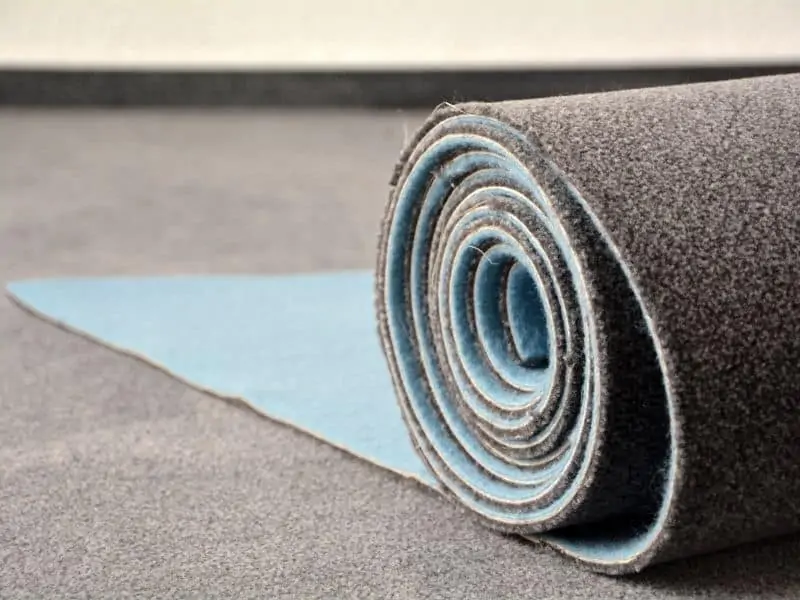If you’ve ever played pool chances are it has happened to you. A shot goes amiss, and your heart sinks as the cue ball heads straight for a pocket. There goes the game. Your opponent can put the ball anywhere on the table. Or can he? Is placement limited to behind the head string? Or to the side of the table where the cue ball scratched? What exactly is a scratch in pool?
We’ve got the answers for you. You’ll discover the different kinds of scratches and the different rules associated with them. From scratching on the break to scratching on the 8 ball. We’ll fill you in on what a scratch is in pool.
The Definition of A Scratch In Pool
A scratch is broadly defined as a cue ball driven off the table or pocketed. For most of the game, these actions are considered standard fouls and result in ball-in-hand for the opponent either on the entire table or behind the head string.
What Happens if you Scratch on the 8-Ball?
This situation presents two distinct occurrences that govern the ensuing penalty:
The Double Scratch Scenario: When both the cue ball and the 8-ball are either pocketed or forced off the table within the confines of a legitimate attempt to pot the 8-ball, a significant outcome materializes. The consequence is the immediate forfeiture of the game in favor of your opponent. This rule underscores the importance of precision and control when executing the final shot involving the 8-ball.
- Applicable Rule: In accordance with the established rule, the game is automatically forfeited to the opposing player in this scenario.
Cue Ball Pocketed, 8-Ball Not Pocketed: In cases where the cue ball finds its way into a pocket while the 8-ball remains un-potted after an attempt on the final 8-ball, in a way, you lucked out! The 8-ball is still in play, and thus the game continues. Your opponent gains the advantage of ball in hand, entitling them to place the cue ball anywhere on the table before taking their shot. This rule grants them optimal control over the cue ball’s placement and subsequent strategy.
- Applicable Rule: In accordance with the established rule, your opponent is awarded ball in hand.
Penalties of a Scratch in Pool: What Happens Now?
You’ve just scratched, now what? That cue ball zipping into the pocket wasn’t part of the plan. Now words like “ball-in-hand” and “behind the head string” are being thrown around, and you’re left wondering what’s next. No need to panic; let’s clarify these terms.
Ball-In-Hand Penalty
When a player commits a scratch, their opponent often receives what’s known as “ball-in-hand.” This penalty grants the non-offending player the ability to place the cue ball anywhere on the table. It’s a significant advantage, as it allows the player to set up the perfect shot. The ball-in-hand rule is designed to punish the player who committed the scratch by giving a significant advantage to their opponent.
Behind the Head String Penalty
Another potential consequence of a scratch is being restricted to positioning the cue ball “behind the head string.” The head string is an imaginary line dividing the table, and being behind it means that the cue ball must be placed or shot from the specific area nearest the end where the game began. This penalty can limit the player’s options, making their next shot more challenging.
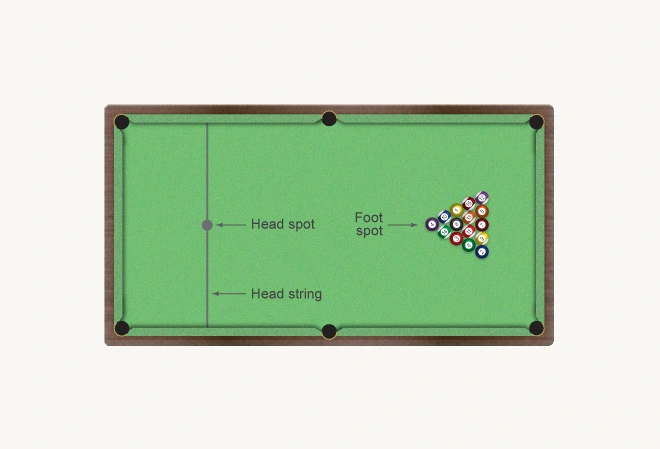
For a deeper exploration of the rules and potential penalties in pool, you may also want to read 8-Ball Pool Rules: The Simple Version, or learn what happens if you hit your opponent’s ball in. These guides offer insights into other aspects of the game, helping you become a more knowledgeable and skilled player.
Definition of A Table Scratch
A table scratch is a term used to describe a number of standard fouls that occur without having the cue ball pocketed or driven off the table. Table scratches usually result in the opposing player getting ball-in-hand. Below are the fouls that fall under the table scratch umbrella.
#1. Failure to Hit an Object Ball
A table scratch occurs when a player fails to hit an object ball with the cue ball. Meaning the cue ball can hit cushions but still be considered a foul if it doesn’t contact an object ball.
#2. Failure To Pocket Or Contact Cushion
Another form of table scratch occurs when the shooting player fails to drive the legal object ball either to a cushion or to a pocket. So, if the player strikes the cue ball, which strikes an object ball, the object ball must either travel to a cushion or a pocket in order to be a legal shot. If the object ball does neither, it’s considered a table scratch.
Different Rules For Scratch Fouls
Rules for scratch fouls vary widely. Even two groups of players shooting pool at two adjacent tables can be playing by different rules. As a result, it’s always best to agree upon common rules before the game starts, to make sure all players are on the same page. The rules below are some of the most common, practiced in professional tournaments, bars, pool halls, and rec rooms around the world.
Break Scratch Rules
If a player scratches on a break there is only one common result of the foul. The opposing player gets the cue ball-in-hand behind the head string. Any object balls pocketed during the break remain pocketed and the table remains open.
In some unofficial circles, a scratch on a break is an automatic loss, but this is not common practice in the professional pool world or in most agreed upon informal rules.
Gameplay Scratch Rules
When a player pockets the cue ball, there are two common outcomes as a result of the foul. The first is ball-in-hand anywhere on the table. The opponent of the player who scratched gets to place the ball anywhere on the table and take a shot. This is meant to deter players from scratching intentionally in order to hinder their opponent’s performance.
The other common practice as a result of a scratch is that of the opposing player shooting from anywhere behind the head string, otherwise known as ‘in the kitchen’ or ‘from the kitchen’. This means that, no matter in which pocket the cue ball is pocketed in, the opposing player can only take the ball in hand from behind the head string.
The head string is denoted by the middle markers or diamonds on either side at the head of the table. In this case, the shooter can only aim at object balls that are directly on or on the opposite side of the head string. If the shooter doesn’t have any object balls on the opposite side of the head string, he or she must bounce the cue ball off of one or more cushions at the opposite end of the table before it’s able to legally contact an object ball in the kitchen.
Professional tournament rules vary on the use of the kitchen when a scratch occurs.
A less common scratch rule dictates that the shot be taken from the side of the table in which the ball was scratched. If the cue ball is pocketed at the head of the table, the shot is taken from behind the head string. If the cue ball sinks at the foot of the table, the shot is taken from behind the foot spot. If a player pots the cue ball in a side pocket, the opposing player can place the ball anywhere on the table. These scratch guidelines aren’t used in any major professional tournament.
Table Scratch Rules
In most areas table scratches are rare and the results are much the same as common pocketed cue ball scratches. So, depending on the rules of the particular game, two common outcomes are practiced after a table scratch.
The first is ball-in-hand behind the head string and the second is ball-in-hand anywhere on the table. Whichever you choose, the rules should be the same for both table scratches and pocket scratches. This not only keeps the game consistent but also takes away any doubt as to the proper protocol as the result of a player fouling.
8-Ball Scratch Rules
In almost every version of 8-ball pool, scratching is considered a foul when shooting at object balls other than the 8 ball. When scratching on an 8 ball shot, the offending player forfeits the game to his or her opponent and the game is over. However, it is only a loss if the 8 ball is no longer in play.
If a player pockets the 8 ball and the cue ball in the same shot, that player forfeits the game. If a player only pockets the cue ball, but the 8 ball remains in play, it is a ball in hand foul and the game continues.
If a player knocks the 8 ball off of the table at any time, that player forfeits the game. If the cue ball is knocked off the table on an 8 ball shot, it is treated as a ball in hand foul and the game continues.
Some rules dictate that a scratch on an8 ball shotis an automatic forfeit, no matter whether the 8 ball is still in play or not. This is not common practice for most professional tournaments.
What is a Scratch In Pool: How The Pros Play
There are many different rules for many different tournaments and leagues around the world. The following examples are believed to be the most commonly practiced in North America, in regards to both professional and amateur play.
Break Scratch
When a player scratches on the break, any pocketed balls remain pocketed, the offending player loses the turn, and the opposing player can shoot from anywhere behind the head string. The table remains open and the shot is limited to any object ball (aside from the 8 ball) on the other side of the head string.
Gameplay Scratch
Pocketing or sending the cue ball off the table is considered a scratch. Also, if the cue ball comes into contact with an object ball in a full pocket, it is also considered a scratch. The offending player forfeits their turn and the opposing player can place and shoot the cue ball from anywhere on the table, in any direction.
Table Scratch
When a player fails to hit any object ball with the cue ball, it’s considered a table scratch. The same goes for an object ball that fails to touch either a cushion or a pocket. The cue ball must hit at least one object ball and the object ball must hit a cushion or a pocket.
If a player commits a table scratch, the opposing player takes over with ball in hand anywhere on the table.
8 Ball Scratch
If a player scratches on an 8 ball shot, but fails to pocket the 8 ball, it is considered a foul. The opposing player takes over, ball-in-hand anywhere on the table.
If, however, a player scratches the cue ball_and_sinks the 8-ball (or drives it off the table), the game is forfeit and the opposing player wins.
In Conclusion
As you can see there are various ways you can scratch while playing pool and each one has its ownset of rulesand penalties assigned to it. As stated in the beginning of the article, its always best to discuss the rules with your opponent prior to playing just to make sure everyone is on the same page.
Not everyone is used to played by the same rules so taking the time to clarify prior to playing can be a real life saver! I hope this article has been helpful and as always, thanks for reading!
